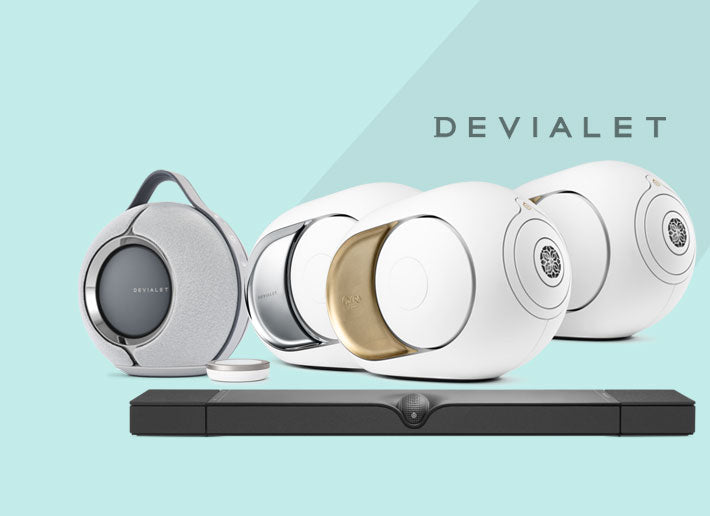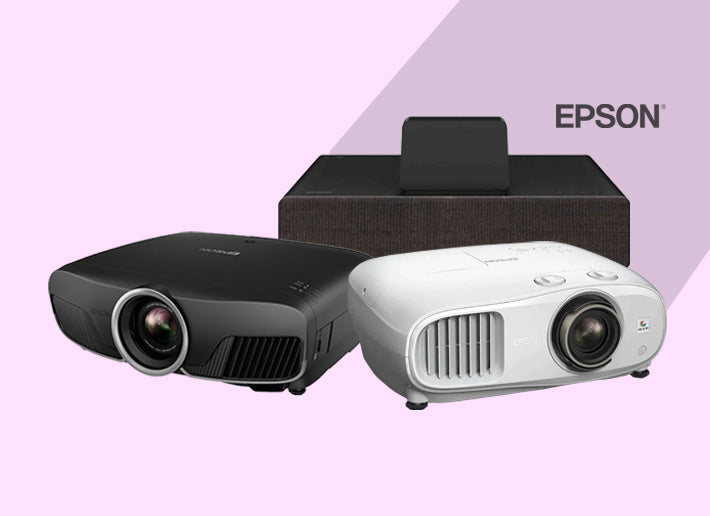Soundbars have come a long way since their inception in the early 2000s. Initially designed to provide a plug-and-play audio device for TV owners that exuded minimalism and simplicity, they have evolved significantly over the years to match and sometimes even surpass several multi-channel speaker systems in functionality and performance.
The increasing popularity of home entertainment, due in no small part to the surge of content brought by streaming services, has been a major driving force in the demand for high-quality soundbars. Dolby Atmos, a groundbreaking audio technology we have lauded in the past, has further revolutionised the soundbar landscape.
With many options in the soundbar space today, it can be daunting to understand what kind works best for your needs. In this blog, let’s delve into the characteristics and features of both traditional and Dolby Atmos-enabled soundbars and understand what to look for when choosing one for your own setup.
Traditional vs. Dolby Atmos-enabled Soundbars
Before we get into the weeds, let’s take a brief look at both kinds of soundbars and understand their main USPs. Traditional soundbars have undergone significant transformations since their introduction evolving from simple, compact devices to sophisticated systems with advanced features. They typically require fewer steps to set up compared to a Dolby-Atmos setup, with most models connecting directly to the TV via HDMI or optical cables.
Audio from a Traditional Soundbar
Crucially, they are generally more affordable than their Dolby Atmos-enabled counterparts by a significant margin. While they often only include basic features such as Bluetooth connectivity, Optical, HDMI and Aux ports, they generally offer very good compatibility with a wide range of devices.
On the other hand, Dolby Atmos-enabled soundbars have flooded the market in recent years and taken the audio world by storm. Introduced in 2012, Dolby Atmos enables soundbars to simulate a 3D audio environment by incorporating height channels, creating a more immersive experience for viewers. They are designed to provide a more immersive experience for viewers.
Audio from a Dolby Atmos-enabled soundbar
They typically include advanced features such as WiFi connectivity, multi-room audio support and voice assistants like Amazon Alexa or Google Assistant. It’s no surprise then that these soundbars are generally more expensive in comparison to their non-Atmos cousins but they may just be well worth the investment. When it comes to compatibility with Dolby Atmos-enabled soundbars, in addition to the content itself, TVs require an ARC/eARC port to ensure Dolby Atmos works as intended (more on this later).
Now that we understand the basic characteristics of both soundbar types, let’s dive deeper into which one is best suited for a specific application.
Also Read: Optimise Your Sound with a Dolby Atmos Soundbar
How Do I Choose The Right Soundbar?
When selecting a soundbar for your home entertainment setup, the choice between a Dolby Atmos-enabled model and a traditional soundbar can be a complex one. Both options offer distinct features and capabilities, catering to different user needs and preferences. However, we are here to simplify things for you and help you think through your purchase logically and pragmatically.
Dolby Atmos Soundbars: For the Immersive Audio Enthusiast
 Image credit - Cybershack
Image credit - Cybershack
Dolby Atmos soundbars are designed to provide a truly immersive audio experience by simulating a three-dimensional sound field. Where non-Atmos soundbars typically feature front-firing drivers that project sound straight at you, these utilise upward-firing speakers that bounce sound off the ceiling, creating the illusion of audio coming from above, below and all around you.
It is particularly well-suited for:
- Home Theater Enthusiasts: Dolby Atmos soundbars excel in delivering an enveloping, cinematic audio experience for movie and TV show enthusiasts. They are compatible with Dolby Atmos-encoded content, which is widely available on streaming platforms, Blu-ray discs and select broadcast sources.
- Gaming Aficionados: Dolby Atmos soundbars can enhance immersion in gaming by providing a more accurate representation of the in-game audio environment, with sound effects originating from various directions.
- Music Lovers: While not their primary focus, Dolby Atmos soundbars can also provide a more expansive and detailed soundstage for music playback, particularly for albums and tracks mixed in Dolby Atmos format.
To fully leverage the capabilities of a Dolby Atmos soundbar, you will need to ensure compatibility with your existing home entertainment ecosystem, including your television, streaming devices and audio sources. Additionally, the room's acoustics and layout can play a significant role in the effectiveness of the Dolby Atmos experience.
Also Read: How to get Most Out of Soundbar - Installation & Buying Tips
Traditional Soundbars: For the Practical and Versatile User
 Image credit - Sony
Image credit - Sony
Traditional soundbars, on the other hand, offer a more straightforward and versatile audio solution. These soundbars typically employ a standard 2.1 or 5.1 channel configuration, without the added complexity of height channels or Dolby Atmos processing. Where Atmos specifically requires at least an HDMI ARC (Audio Return Channel) port to enjoy lossy Dolby Atmos audio with streaming services (and eARC for high-quality lossless Dolby Atmos soundtracks), there are no such requirements with traditional soundbars and therefore much wider compatibility.
They are well-suited for:
- Casual TV Viewers: Traditional soundbars provide a significant audio upgrade over built-in TV speakers, delivering a more immersive and engaging listening experience for everyday TV viewing, without the need for complex setup or configuration.
- Space-constrained Environments: Due to their compact and streamlined design, traditional soundbars are an excellent choice for users with limited space, such as in small apartments or bedrooms, where a more elaborate Dolby Atmos setup may not be feasible.
- Multi-Purpose Audio: Traditional soundbars can seamlessly integrate with a wider range of devices, including TVs, tablets, phones and various audio sources, making them a versatile option for users with diverse audio requirements.
Traditional soundbars often offer a more affordable entry point into the world of enhanced audio, making them an attractive option for budget-conscious consumers or those who prioritise simplicity over the most advanced audio features.
So What Am I Looking At?
When deciding between a Dolby Atmos soundbar and a traditional one, here’s what it all boils down to:
- Content Consumption Habits: Assess the types of content you primarily consume, such as movies, TV shows, games, or music and determine if Dolby Atmos-enabled content is a significant part of your viewing or listening experience.
- Room Layout and Acoustics: Evaluate the size and layout of your room, as well as the ceiling height and presence of reflective surfaces, as these can impact the effectiveness of a Dolby Atmos soundbar's height channels.
- Budget and Prioritisation: Determine your budget and whether the added cost of a Dolby Atmos soundbar aligns with your audio quality and immersion preferences.
- Ecosystem Compatibility: Ensure that your existing home entertainment devices, such as your TV, streaming sources and gaming consoles, are compatible with the soundbar you choose to ensure seamless integration and optimal performance.
The Denon DHT-S217 is a great entry point into the world of affordable Dolby Atmos soundbars with support for HDMI eARC. Polk Audio’s Signa S4 takes the experience up a notch with a wireless subwoofer and VoiceAdjust™ Technology. At the very high end, offerings from Bowers & Wilkins, Bang & Olufsen, Sonos and Devialet provide premium alternatives that include more drivers, sleeker designs, support for Wi-Fi and Apple AirPlay (on select models), app-based smart tuning and lots more.
Why an Atmos Soundbar may be just what the Doc Ordered?
Even for casual users, Dolby Atmos-enabled soundbars offer a tangible elevation (no pun intended) in audio quality for home entertainment. These soundbars provide an immersive audio experience that draws you into the action, making movies and TV shows feel more engaging and realistic. The addition of height channels and object-based audio creates a more expansive soundstage, allowing for a greater sense of depth and dimensionality.
Furthermore, newer TVs and connected devices increasingly support Dolby Atmos, making them easy to integrate into contemporary home theatre setups. With their impressive sound quality and versatility, Dolby Atmos-enabled soundbars represent a worthwhile investment for anyone looking to enhance their home entertainment experience without sacrificing convenience or quality.
Still unsure about soundbars? Explore our premium range of soundbars if you’re considering a purchase for your home theatre system or personal entertainment space. Our team of experts can guide you in making the right purchase.









